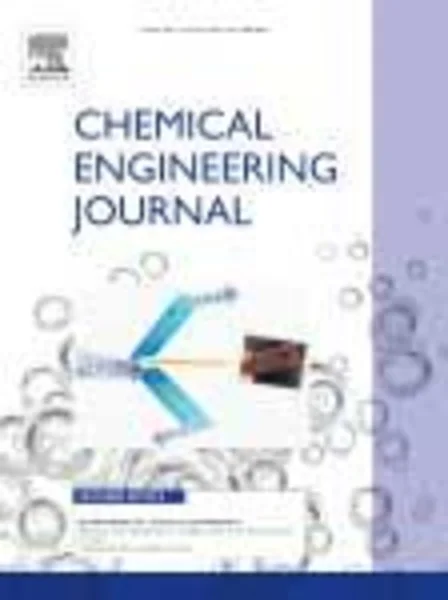-
hydrodynamics and gas–liquid mass transfer in a horizontal rotating foam stirrer reactor
جزئیات بیشتر مقاله- تاریخ ارائه: 1392/01/01
- تاریخ انتشار در تی پی بین: 1392/01/01
- تعداد بازدید: 862
- تعداد پرسش و پاسخ ها: 0
- شماره تماس دبیرخانه رویداد: -
this paper describes a new multiphase reactor, the horizontal rotating foam stirrer reactor, which uses a donut-shaped foam block mounted on a horizontal shaft functioning as a stirrer and as a catalyst support. the effect of different operational conditions such as stirring speed, reactor length, foam porosity, foam thickness and the presence of baffles on the gas–liquid mass transfer and the gas–liquid flow distribution is discussed for the systems water/air and glycerol/air. the rate of gas–liquid mass transfer is measured spectrometrically while the hydrodynamics of the reactor is studied by γ-ray tomography. for a partially filled reactor, three flow states could be distinguished: the trickle state, the slosh state and the ring state. in the trickle state the liquid flows in a thin stream over the foam while in the slosh state the liquid is pushed upward by the stirrer and sprayed, leading to the formation of fine liquid droplets and fine gas bubbles. the transition between the trickle state and the slosh state occurs at 200 rpm. this is drastically affected by the liquid viscosity and in some extent by the reactor length and the foam thickness. when the stirring speed is constant, the ring state, which results in a cylindrical liquid layer on the inside wall, appears with increasing the liquid content in the reactor (above 70%). due to a large gas–liquid interface in the slosh state, a high gas–liquid mass transfer is achieved. kglagl values up to 0.32 s−1 are found. this is comparable to gas–liquid mass transfer rates in slurry reactors. however, in case of the foam stirrer a higher power input per liquid volume is needed in order to achieve the minimum stirrer speed required for complete dispersion of the gas. it is shown that mass transfer coefficients decreased with increasing viscosity, while the centrifugal force revealed to be effective in enhancing mass transfer in a viscous media. conclusions on the optimal reactor configuration are drawn for the application in the fine chemical industry.
مقالات جدیدترین رویدادها
-
استفاده از تحلیل اهمیت-عملکرد در ارائه الگوی مدیریت خلاقیت سازمانی و ارائه راهکار جهت بهبود
-
بررسی تاثیر ارزش وجوه نقد مازاد بر ساختار سرمایه شرکت های پذیرفته شده در بورس اوراق بهادار تهران
-
بررسی تأثیر سطح افشای ریسک بر قرارداد بدهی شرکت های پذیرفته شده در بورس اوراق بهادار تهران
-
بررسی تأثیر رتبه بندی اعتباری مبتنی بر مدل امتیاز بازار نوظهور بر نقد شوندگی سهام با تأکید بر خصوصی سازی شرکت ها
-
تأثیر آمیخته بازاریابی پوشاک ایرانی بر تصویر ذهنی مشتری پوشاک ایرانی (هاکوپیان)
-
عوامل خطر ساز بیماری های قلبی- عروقی در بندر بوشهر بر اساس پروژه مونیکای سازمان جهانی بهداشت؛ پروژه قلب سالم خلیج فارس
-
تاثیر تمرین های تقویتی بر شاخص های بیومکانیکی راه رفتن در بیماران همی پارزی مزمن ناشی از سکته مغزی
-
بررسی تاثیر مکش بافتی اولیه بر پتانسیل رمبندگی خاک
-
عملکرد میراگرهای ویسکوز و اصطکاکی در بهبود پاسخ لرزه ای سازه های جداسازی شده ی جرمی
-
تظاهرات دهانی کودکان مبتلا به hiv
مقالات جدیدترین ژورنال ها
-
مدیریت و بررسی افسردگی دانش آموزان دختر مقطع متوسطه دوم در دروان کرونا در شهرستان دزفول
-
مدیریت و بررسی خرد سیاسی در اندیشه ی فردوسی در ادب ایران
-
واکاوی و مدیریت توصیفی قلمدان(جاکلیدی)ضریح در موزه آستان قدس رضوی
-
بررسی تاثیر خلاقیت، دانش و انگیزه کارکنان بر پیشنهادات نوآورانه کارکنان ( مورد مطالعه: هتل های 3 و 4 ستاره استان کرمان)
-
بررسی تاثیر کیفیت سیستم های اطلاعاتی بر تصمیم گیری موفق در شرکتهای تولیدی استان اصفهان (مورد مطالعه: مدیران شرکتهای تولیدی استان اصفهان)
-
بررسی نقش مذهب در تحلیل شخصیت قهرمان داستان در نمایشنامه های برگزیده اول، دوره هشتم تا دهم جشنواره تئاتر رضوی
-
کاوشی در تکنولوژی فکر از منظر اسلام با رویکرد جامعه شناختی
-
وظایف و مسئولیت مدنی شهرداری شهرستان بافت
-
boron nitride nanocone as an adsorbent and senor for ampicillin: a computational study
-
the effect of suffusion phenomenon in the increasing of land subsidence rate




سوال خود را در مورد این مقاله مطرح نمایید :